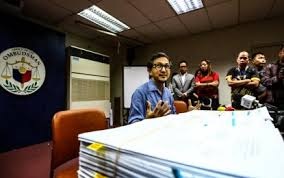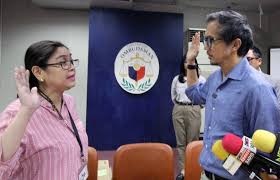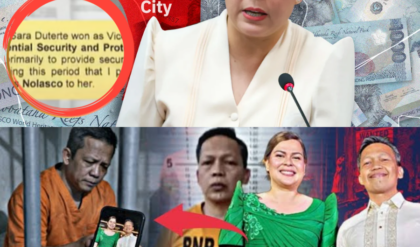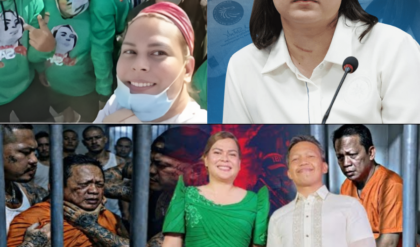Introduction: Unprecedented Crackdown on Corruption

The Department of Public Works and Highways (DPWH) has initiated a significant anti-corruption campaign, formally filing criminal complaints against 22 individuals, including high-ranking department officials and private contractors, before the Office of the Ombudsman (OMB). The charges stem from alleged anomalous infrastructure projects carried out in two geographically disparate regions: La Union in Northern Luzon and Davao Occidental in Mindanao. This move signals an aggressive push for accountability and transparency within one of the Philippines’ most crucial government agencies responsible for the nation’s infrastructure backbone.
DPWH Secretary Vince Dizon personally led the filing of the cases, accompanied by Andres Reyes, the chairperson of the newly established Independent Commission for Infrastructure (ICI). The complaints cite serious offenses, primarily focusing on Malversation of Public Funds and violations of Section 3 (e) of Republic Act No. 3019, widely known as the Anti-Graft and Corrupt Practices Act. This concerted action underscores the government’s commitment to rooting out irregularities that plague public works and erode public trust.
The Formal Charges: Malversation and Graft
The legal basis for the complaints centers on the alleged misuse of state funds and the preferential treatment or undue advantage given to private parties, resulting in financial injury to the government. Section 3 (e) of R.A. 3019 is a broad but powerful provision, often utilized in corruption cases, penalizing public officers who act with manifest partiality, evident bad faith, or gross inexcusable negligence in discharging their official functions, thereby causing undue injury to any party, including the government. Malversation, on the other hand, deals directly with the misappropriation of public funds or property by an accountable public officer.
The filing of these cases marks a critical juncture, as it moves beyond internal departmental disciplinary actions into the realm of criminal prosecution, which carries the penalty of imprisonment and perpetual disqualification from holding public office.
The La Union Contingent: A Dozen Officials from the 2nd DEO

A large concentration of the accused officials—a total of twelve (12)—hail from the DPWH La Union 2nd District Engineering Office (DEO), indicating that the alleged anomalies within this specific unit were extensive and systemic. The list of charged personnel spans across multiple essential sections of the DEO, suggesting a coordinated effort in the perpetration of the offenses.
Key officials named from the La Union 2nd DEO include:
Gil Lorenzo, the District Engineer, who held the highest authority in the office.
Raul Gali, the Assistant District Engineer.
Mario Laroya, Chief of the Construction Section, suggesting problems in the actual project implementation and oversight.
Ethel Guerrero and Joseph Delizo, Project Engineers, who were directly responsible for on-the-ground execution.
Christian Eduria, who held the dual role of Project Engineer and Materials Engineer, and Albemar Elloise Estipular, also a Materials Engineer, pointing to potential fraud related to construction materials and specifications.
Representatives from the Construction Section (Nestor Sibayan), Quality Assurance Section (Aries Graciano Novencido), Planning and Design Section (Jose Perez), and Maintenance Section (Zyrah Marie Estipular) were also implicated, indicating that the planning, quality checks, and maintenance sign-offs were all compromised.
Dan G. Ginete, Chief of the Finance Section, was included, raising concerns about the disbursement and accounting of project funds.
Also implicated in the La Union projects was private individual Marivic Manalo and the contracting firm Silverwolves Construction Corp., represented by its General Manager Moises Tabucol and Alvin Diego. The involvement of the contractor alongside numerous DPWH officials underscores the nature of the alleged conspiracy—a collusion between public servants and private entities for personal gain.
The Davao Occidental Allegations: Focus on District Leadership
The second set of charges focuses on the DPWH Davao Occidental District Engineering Office (DEO), where eight (8) officials were named alongside a contracting firm. These cases appear to target the district’s core leadership and technical staff.
Among the accused from the Davao Occidental DEO are:
Rogri go Larete, the District Engineer.
Michael Awa, who served as the OIC – Assistant District Engineer and simultaneously as the Chief of the Construction Section.
Joel Lumogdang, also an OIC – Chief of the Construction Section. The concurrent or rotating roles in the Construction Section suggest a possible mechanism for operational manipulation.
Harold Villaver, a Project Engineer.
Jafaeil Faunillan, Chief of the Quality Assurance Section, whose role is critical in validating project quality.
The heads of other key sections were also charged: Josephine Valdez (Chief, Planning and Design Section), Ranulfo Flores (Chief, Maintenance Section), and Czar Ryan Ubungen (Acting Chief, Finance Section).
The private company implicated in the Davao Occidental projects is St. Timothy Construction Corp., represented by Ma. Roma Angeline Rimando, the authorized managing officer, and/or Cezarah Rowena Discaya.
The consistent pattern across both regions—implicating the District Engineer, the Assistant Engineer, and the Chiefs of the Construction, Quality Assurance, and Finance sections—suggests a similar blueprint for the alleged anomalies, one that requires control over every stage of the infrastructure project lifecycle, from planning and budgeting to construction oversight and payment.
The Role of the Independent Commission for Infrastructure (ICI)
The filing of the DPWH complaints coincides with the establishment and operations of the ICI, a body created to provide an impartial, external layer of scrutiny over government infrastructure projects.
ICI Executive Director Brian Keith Hosaka clarified that the DPWH’s filing is a separate and distinct criminal complaint from the independent proceedings being conducted by the ICI. He emphasized the commission’s mandate: “Under the mandate of the ICI, we make referrals to the Ombudsman on possible actions against those who may be responsible for anomalous infrastructure projects. I believe that the one to be filed by DPWH this afternoon with the OMB is a complaint.”
ICI Chairperson Andres Reyes further elaborated on the commission’s meticulous approach, stating that the ICI will conduct a thorough review and verification process before sending any referrals to the Ombudsman. This strict vetting process is designed to ensure that the evidence and testimonies gathered are robust enough to withstand judicial scrutiny: “The evidence and testimonies we receive must undergo thorough verification before we can send referrals to the Office of the Ombudsman. These should hold up in court.”
Reyes also addressed the growing public demand for greater transparency, particularly the clamor to livestream ICI hearings. He acknowledged this call from the “Filipino people” but noted the procedural steps required before implementation. The ICI must first “study and draft the rules of procedure and parameters to allow for livestreaming, taking into consideration sensitive information and the Constitutional rights of invited resource persons.”
This focus on due process and verifiable evidence by the ICI suggests a commitment not just to expose corruption but to secure successful convictions, transforming public outcry into tangible legal outcomes. The collaborative yet distinct efforts of the DPWH and the ICI signal a multi-pronged approach to restoring integrity in public works management.
Conclusion: A Turning Point for Infrastructure Governance
The DPWH’s decisive action against 22 officials and contractors in connection with the La Union and Davao Occidental projects serves as a powerful testament to the current administration’s resolve to enforce accountability. The wide-ranging nature of the complaints, which span the entire project bureaucracy from the District Engineer down to section chiefs and private partners, sends a clear warning across the entire agency and the construction industry.
As the complaints move into the investigative phase at the Office of the Ombudsman, and as the ICI continues its parallel scrutiny and aims for increased transparency through potential livestreaming, the spotlight remains firmly fixed on the integrity of infrastructure governance. This case will be a crucial test of the mechanisms designed to combat deeply entrenched corruption, promising a new chapter in the Philippines’ ongoing fight for ethical public service and transparent project delivery.





